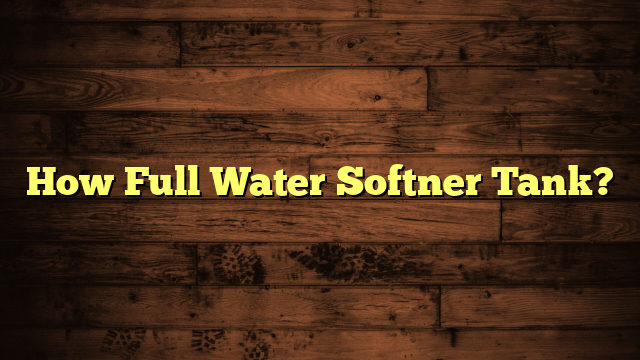Integrating Tankless Water Heaters With Water Softeners: a Practical Guide
When you’re considering energy efficiency, appliance longevity, and water quality, integrating tankless water heaters with water softeners can be a game changer. You might be wondering how to guarantee compatibility, what installation techniques to follow, or what common challenges to anticipate. Understanding these elements is essential for maximizing the benefits of your systems. By exploring these aspects, you can set yourself up for success and enjoy cleaner, softer water throughout your home.
Key Takeaways
- Install the water softener before the tankless heater to prevent scale buildup and clogging in the heating system.
- Ensure plumbing compatibility and check water pressure to support both systems effectively.
- Select a water softener with a flow rate that matches the demand of the tankless heater for optimal performance.
- Conduct routine maintenance, including annual flushing of the heater and inspections of the softener’s resin beads.
- Follow safety measures, such as ensuring proper ventilation for gas heaters and maintaining a dry environment for electric models.
Benefits of Integration
Integrating tankless water heaters with water softeners offers several key benefits that can enhance your home’s efficiency and comfort.
One significant advantage is improved energy efficiency. Tankless water heaters heat water on demand, meaning they only consume energy when you need hot water. When combined with a water softener, the system operates more effectively, as softened water heats up more quickly than hard water. This can lead to lower energy bills, providing you with noticeable cost savings over time.
Additionally, the integration minimizes scale buildup in your tankless heater, which can prolong its lifespan and reduce maintenance costs. You won’t have to worry about frequent repairs or replacements, translating into further savings.
Moreover, having softer water enhances the overall performance of your appliances, making them last longer and work better. Your family will enjoy cleaner clothes, softer skin, and improved water quality.
Understanding Water Softeners
Understanding water softeners is key to maximizing the benefits of your tankless water heater system. Water hardness, primarily caused by minerals like calcium and magnesium, can create issues such as scale buildup, leading to reduced efficiency and lifespan of your heater.
To combat this, you can employ various softening methods. The most common method is ion exchange, where hard water passes through a resin bed that exchanges hardness ions for sodium or potassium ions. This process effectively reduces water hardness, making it gentler on your plumbing and appliances.
There are also salt-free systems that use a different approach, such as template-assisted crystallization, which alters the structure of minerals so they don’t adhere to surfaces.
It’s important to test your water’s hardness before selecting a softener. You can usually find test kits at home improvement stores or online. Knowing your water quality helps you choose the right system and settings for peak performance.
Tankless Water Heater Overview
Tankless water heaters offer a modern solution for your hot water needs, providing endless hot water on demand while saving space and energy.
However, before you make the switch, it’s important to evaluate the installation challenges and unique benefits these systems bring.
Understanding these factors can help you make an informed decision that fits your home and lifestyle.
Benefits of Tankless Heaters
Revolutionizing your hot water experience, tankless water heaters offer a range of benefits that traditional systems simply can’t match. One of the most considerable advantages is energy efficiency. Unlike conventional heaters that constantly heat and store water, tankless models heat water on demand. This means you’re only using energy when you need hot water, leading to lower utility bills.
In terms of cost savings, the initial investment in a tankless system can be offset over time through reduced energy costs. Many homeowners find that they recoup their expenses within a few years. Furthermore, tankless water heaters typically have a longer lifespan than traditional tanks, often lasting more than 20 years with proper maintenance. This longevity not only saves you money on replacements but also minimizes waste.
Another notable benefit is the endless supply of hot water. Whether you’re showering, washing dishes, or doing laundry, you won’t have to worry about running out of hot water. This convenience is particularly appealing for large families or households with high hot water demands.
Installation Considerations and Challenges
When considering the installation of a tankless water heater, you’ll encounter several key challenges that can impact your decision.
First, you’ll need to choose the right installation techniques, which may vary depending on your home’s existing plumbing and electrical systems. If your current setup isn’t compatible, you might face additional costs and delays.
Another challenge is proper venting. Tankless heaters require specific venting to operate efficiently and safely. Failing to install the correct venting can lead to performance issues or even hazardous situations, so don’t overlook this step.
Additionally, you may run into troubleshooting issues during or after installation. Common problems include inconsistent water temperature and flow rate, often linked to improper sizing or installation errors. If you encounter these challenges, it’s essential to consult with a professional who can help you navigate the complexities of your system.
Lastly, integrating a water softener with your tankless heater adds another layer of complexity. You’ll need to verify the softener is compatible and installed correctly to maximize benefits while minimizing potential problems.
Installation Considerations
When you’re installing a tankless water heater with a water softener, there are several key considerations to keep in mind.
First, verify your plumbing system is compatible with the new units, as this can impact efficiency and performance.
You’ll also need to check the voltage and power requirements, along with the available space and ventilation, to guarantee a smooth installation process.
Plumbing System Compatibility
Integrating tankless water heaters with water softeners requires careful consideration of your plumbing system’s compatibility. Before diving into installation, you need to evaluate several plumbing compatibility factors.
Start by checking the size and type of your existing pipes. Tankless systems often require a different flow rate compared to traditional heaters, which can lead to system integration challenges if your plumbing isn’t up to par.
Next, assess the location of both units. Confirm that the water softener can be installed upstream of the tankless heater, as this setup helps in protecting your heater from scale buildup.
You should also inspect your water pressure; both systems need adequate pressure to function efficiently.
Finally, consider the overall layout of your plumbing. If you’ve got a complex or older system, you might face additional challenges in integrating new technology.
Consulting a plumbing professional can provide valuable insights into your specific situation and help you avoid costly mistakes. By addressing these compatibility issues upfront, you’ll set the stage for a seamless installation that enhances your home’s hot water experience.
Voltage and Power Requirements
Understanding voltage and power requirements is essential for the successful installation of tankless water heaters and water softeners. You need to pay close attention to the electrical specifications of both systems to guarantee they work efficiently together.
Here are some key points to take into account:
- Power Consumption: Check the wattage of your tankless water heater and water softener. They need to be compatible to avoid overloading your electrical system.
- Voltage Rating: Most tankless water heaters operate on 240 volts, while water softeners typically use standard 120 volts. Make sure your home’s electrical system can handle this.
- Dedicated Circuits: It’s advisable to install dedicated circuits for each unit. This prevents interference and guarantees reliable operation.
- Breaker Size: Consult the manufacturer’s guidelines for the appropriate circuit breaker size. Using the wrong size can lead to tripped breakers or, worse, electrical fires.
Space and Ventilation Needs
Proper space and ventilation are essential for the efficient operation of tankless water heaters and water softeners. When planning your installation, you’ll need to evaluate the space requirements for both systems.
Tankless water heaters usually need a minimum clearance around them for proper airflow. Check the manufacturer’s guidelines to determine the exact dimensions and verify you allocate enough room.
Ventilation options also play a critical role. If your heater is gas-powered, you’ll need to install a venting system that meets local codes. Proper ventilation prevents the buildup of harmful gases, maintaining safety and efficiency.
If using an electric model, confirm that the area is dry and well-ventilated to prevent moisture damage. Additionally, you should keep both units away from potential sources of heat or moisture, as this can affect performance.
Think about installing your systems in a dedicated space like a utility room or basement, where you can manage temperature and humidity levels effectively.
Common Challenges
While tankless water heaters offer numerous benefits, combining them with water softeners can present some common challenges.
You might encounter issues that affect both performance and efficiency. Here are some key challenges to keep in mind:
- Scaling Issues: Hard water can lead to mineral buildup in your tankless heater, reducing its lifespan and efficiency.
- Flow Rate Concerns: The flow rate of your water softener mightn’t match the demand of your tankless heater, especially during peak usage times.
- Increased Maintenance: Combining these systems can require more frequent maintenance checks to guarantee everything runs smoothly and effectively.
- Installation Complexities: Integrating a water softener with a tankless heater can complicate your plumbing setup, potentially leading to higher installation costs.
Maintenance Tips
To keep your tankless water heater and water softener running efficiently, regular maintenance is essential. Start with routine inspections every few months. Check for any visible leaks, corrosion, or mineral buildup around both systems. This not only helps you catch potential issues early but also prolongs their lifespan.
Next, make it a habit to flush your tankless water heater at least once a year. This process removes sediment and mineral deposits that can affect performance.
For your water softener, inspect the resin beads and verify they’re functioning properly. If you notice any clogs, it’s time to clean or replace them.
When you encounter issues, don’t panic. Use these troubleshooting tips: If your water temperature fluctuates, check the heating elements. For softener problems, confirm the salt level is adequate and there are no blockages in the brine line.
Finally, always refer to the manufacturer’s guidelines for specific maintenance tasks and schedules, as these can vary by model.
Expert Recommendations
When it comes to integrating tankless water heaters with water softeners, expert recommendations can help you maximize efficiency and longevity. By following these expert insights and installation advice, you can guarantee a smooth setup and peak performance.
- Choose the Right Water Softener: Opt for a unit that can handle the flow rate required by your tankless heater. This guarantees you won’t run out of hot water when you need it most.
- Install in the Correct Order: Always install the water softener before the tankless water heater. This setup prevents hard water minerals from clogging the heater, which can lead to costly repairs.
- Use a Pre-Filter: Installing a pre-filter can help trap larger particles before they reach your heater and softener, extending their lifespan.
- Regularly Monitor Settings: Keep an eye on the salt levels in your water softener and the temperature settings of your tankless heater. Regular adjustments can enhance efficiency and prevent issues.
Frequently Asked Questions
Can Tankless Water Heaters Work Without a Water Softener?
Yes, tankless water heaters can work without a water softener, but poor water quality can lead to mineral buildup. Regular maintenance tips, like descaling, can help guarantee your system runs efficiently and lasts longer.
How Does Water Hardness Affect Tankless Water Heaters?
Water hardness affects tankless water heaters by causing scale buildup, which can reduce efficiency and lifespan. If you don’t address this issue, you’ll likely face costly repairs and decreased performance in your heating system.
Are There Specific Brands Recommended for Integration?
When considering brand comparisons for water softeners and tankless heaters, look for reliable brands like Rheem or Rinnai. Their integration benefits include improved efficiency and reduced mineral buildup, ensuring your system runs smoothly for years.
What Is the Lifespan of Integrated Systems?
Imagine a trusty steed galloping through the years. With proper maintenance tips, your integrated system can thrive for about 15-20 years, but replacement factors like water quality and usage can influence that lifespan greatly.
Can I Use a Salt-Free Water Softener With Tankless Heaters?
You can use a salt-free water softener with tankless heaters. These systems provide salt-free benefits, maintaining softener efficiency while preventing mineral buildup, ensuring your heater operates smoothly and prolonging its lifespan.
Conclusion
Integrating a tankless water heater with a water softener might seem like a luxury, but the irony is, it’s actually a smart move for your home’s efficiency and longevity. By tackling scale buildup and energy waste, you’re not just saving money; you’re becoming a champion of sustainability without even trying. So, while others might endure lukewarm showers and costly repairs, you’ll be enjoying hot, soft water with peace of mind—talk about winning the appliance game!







